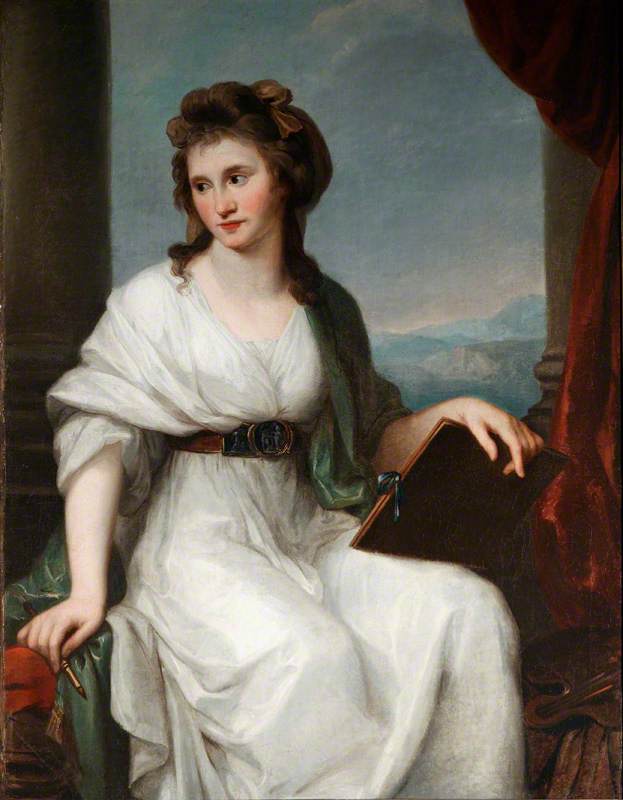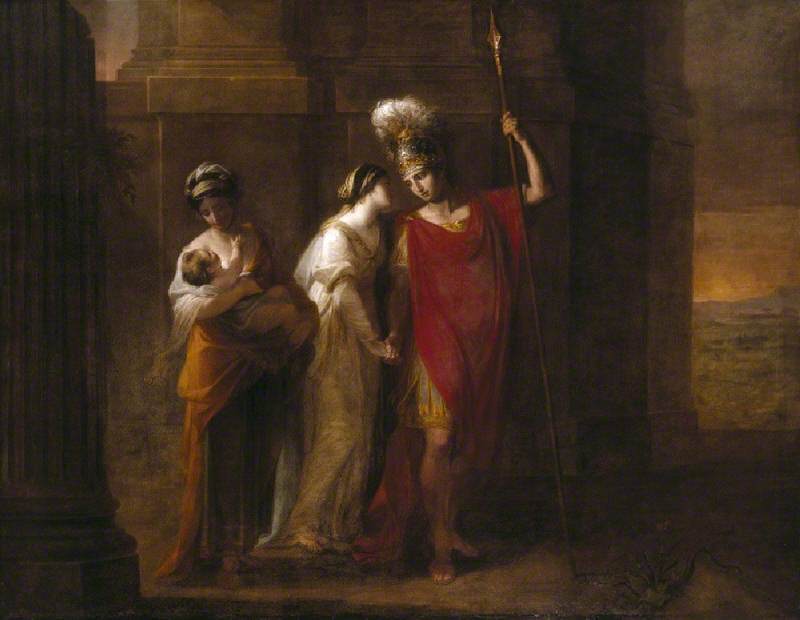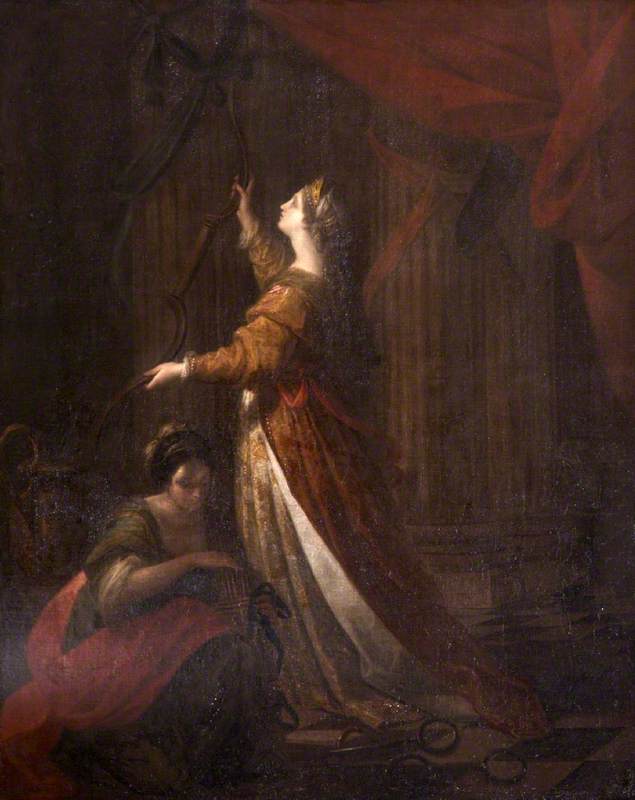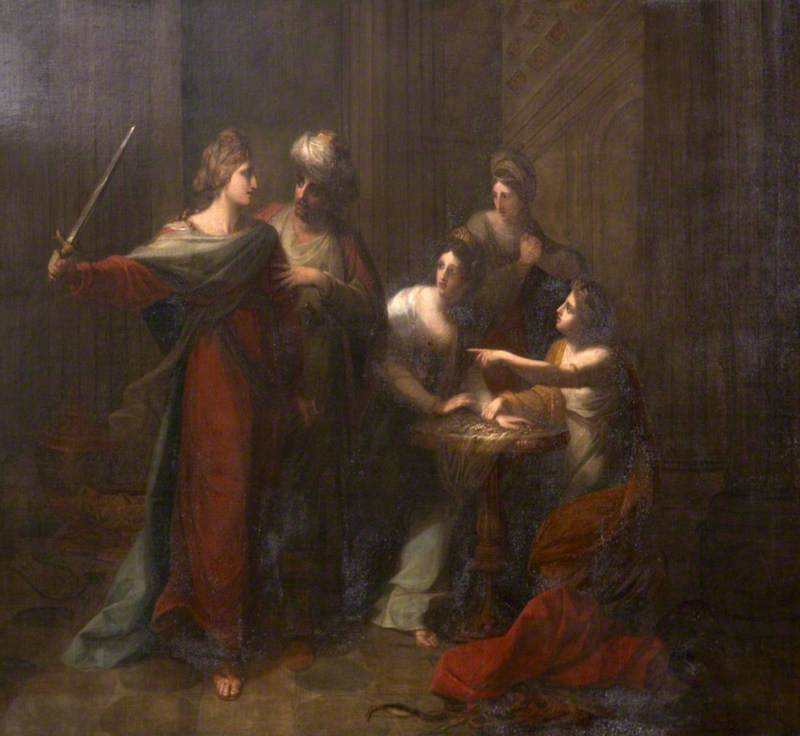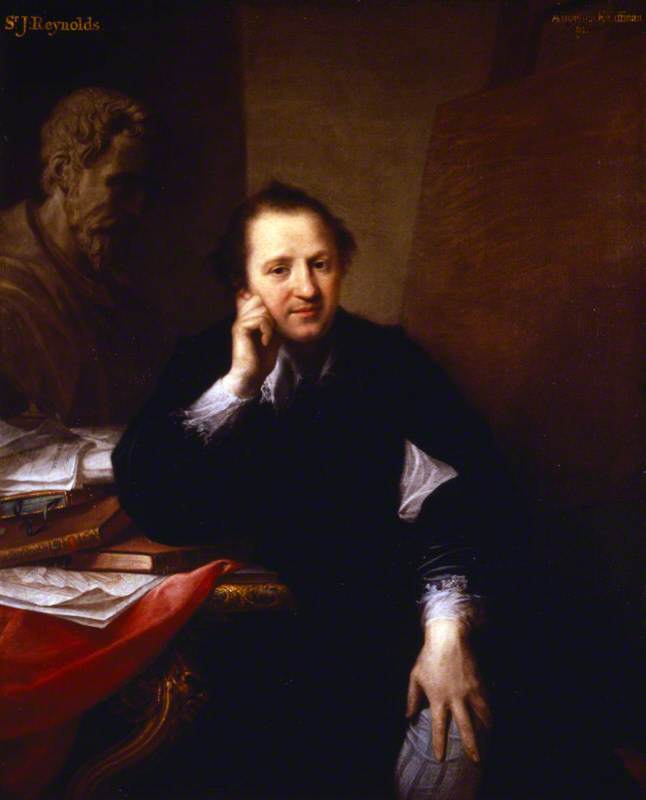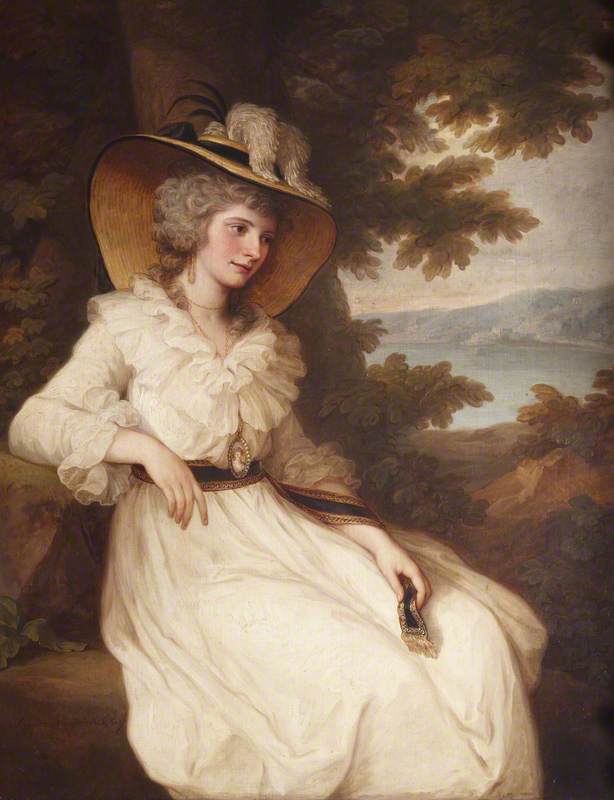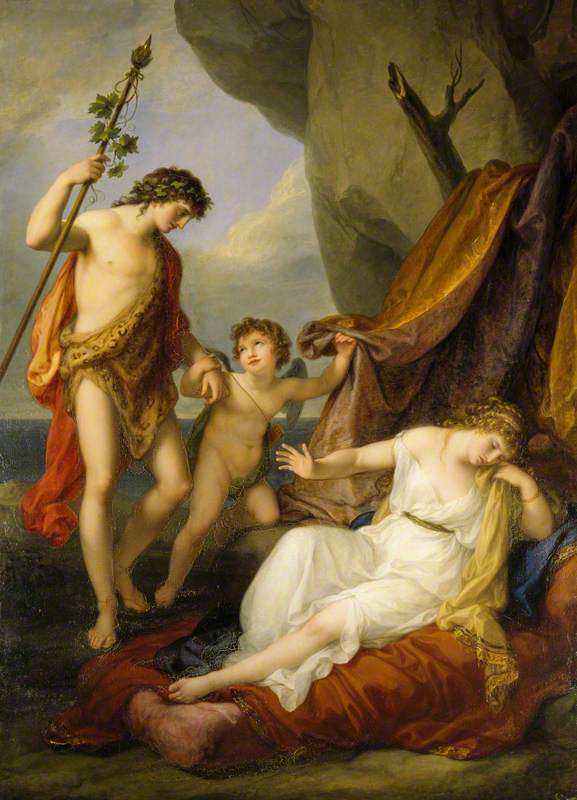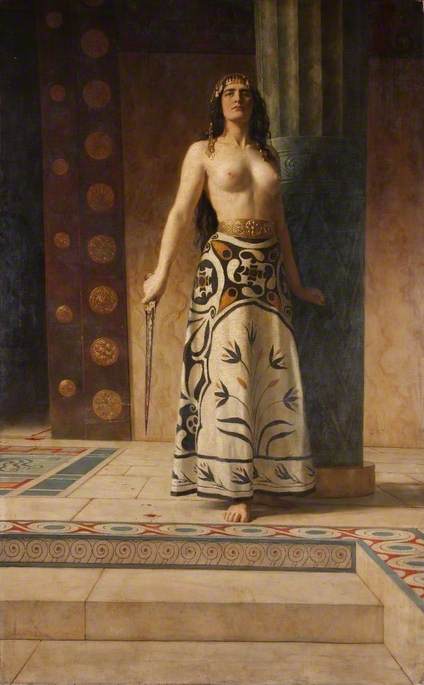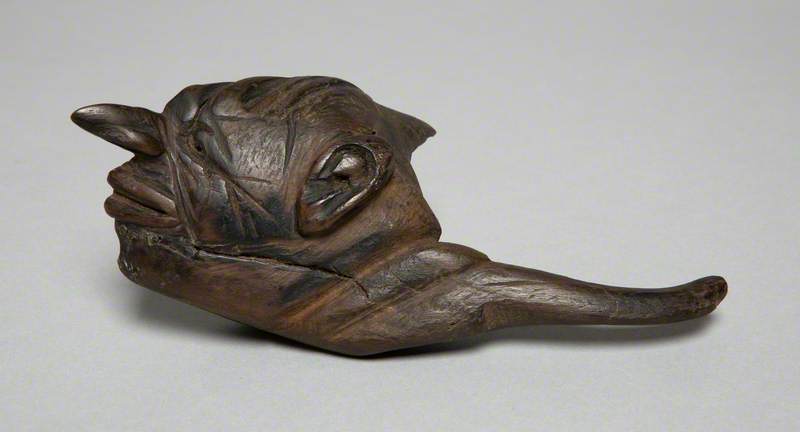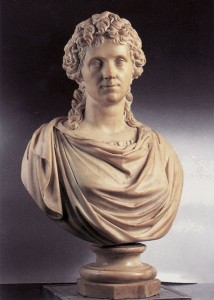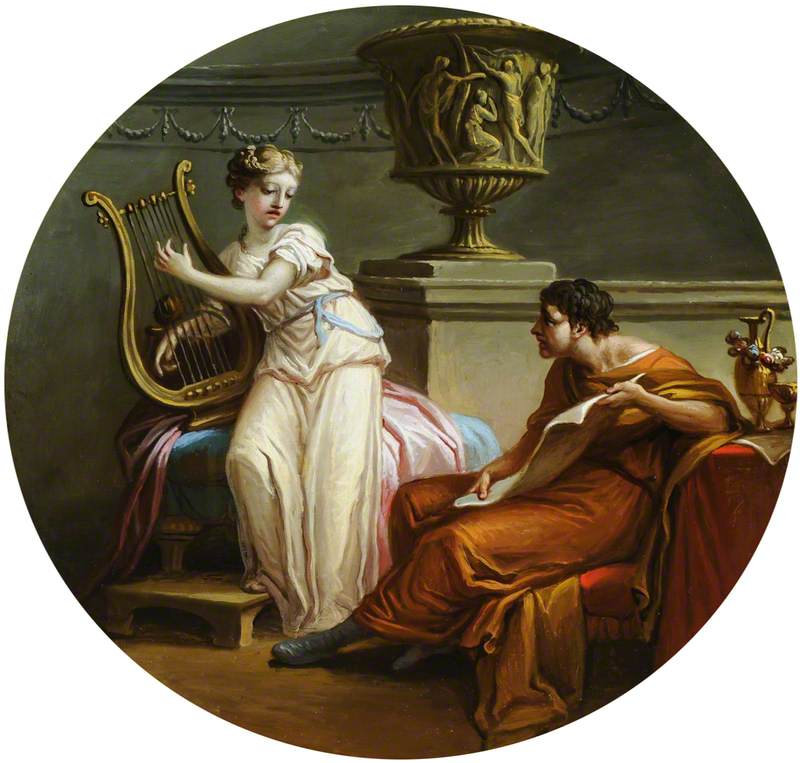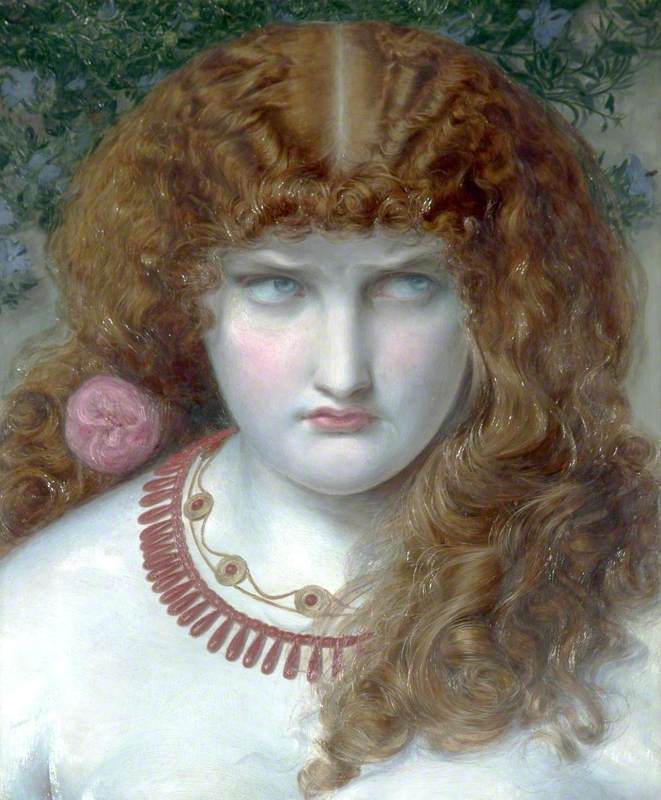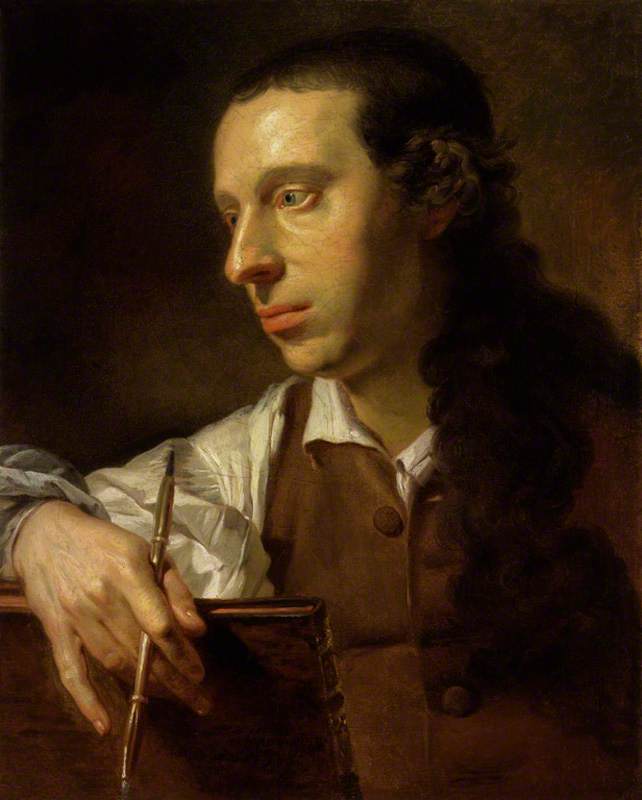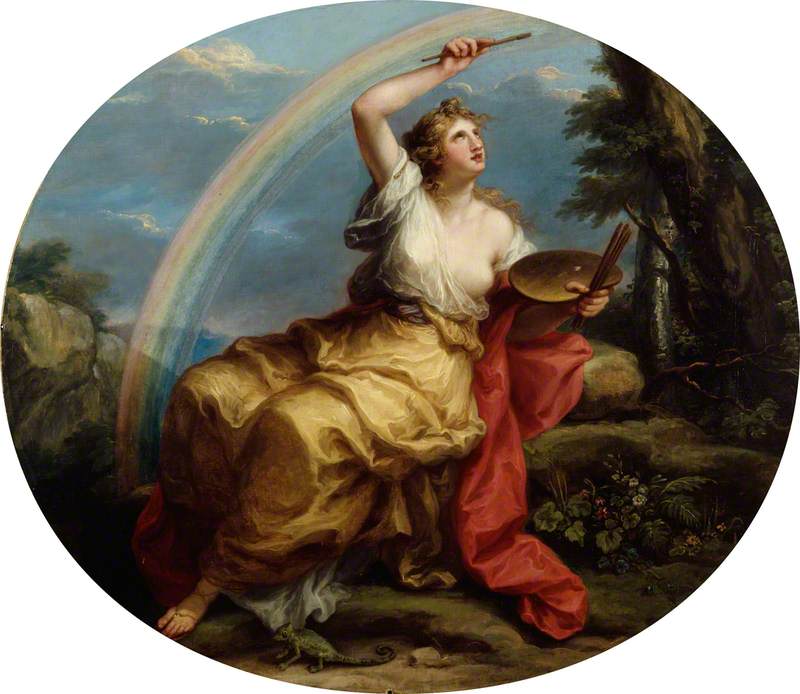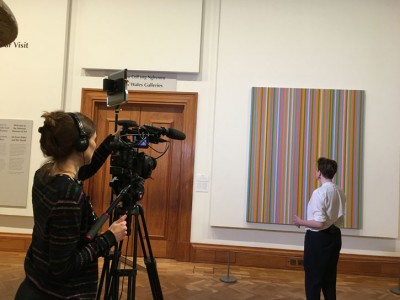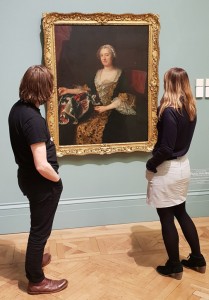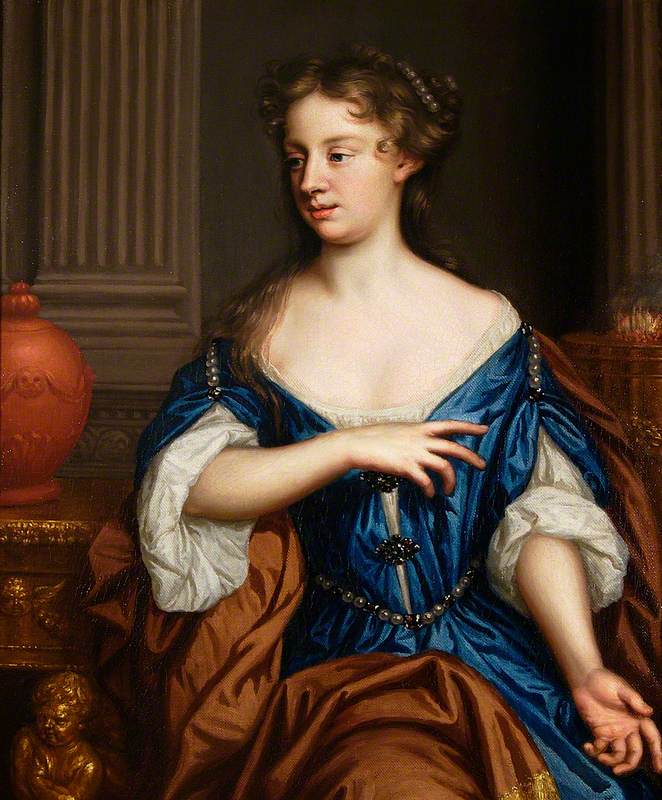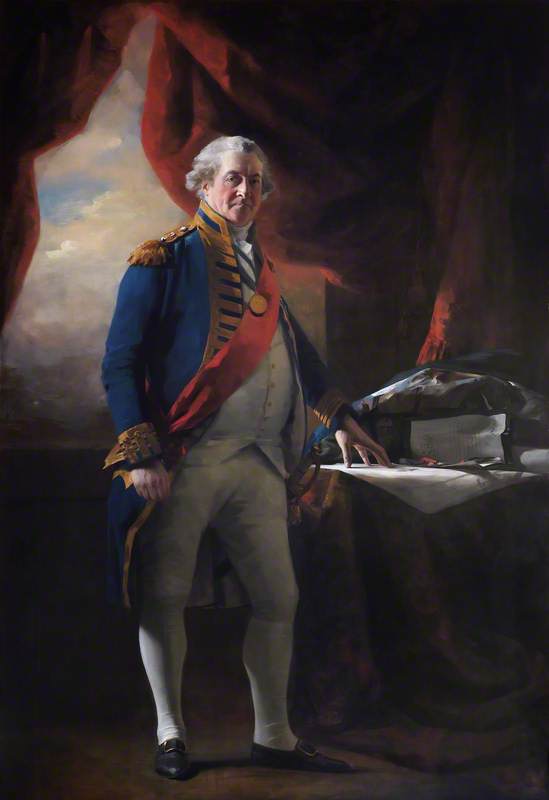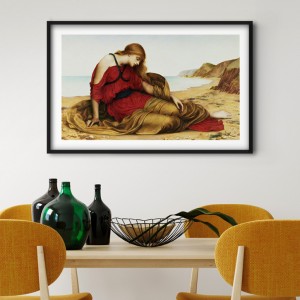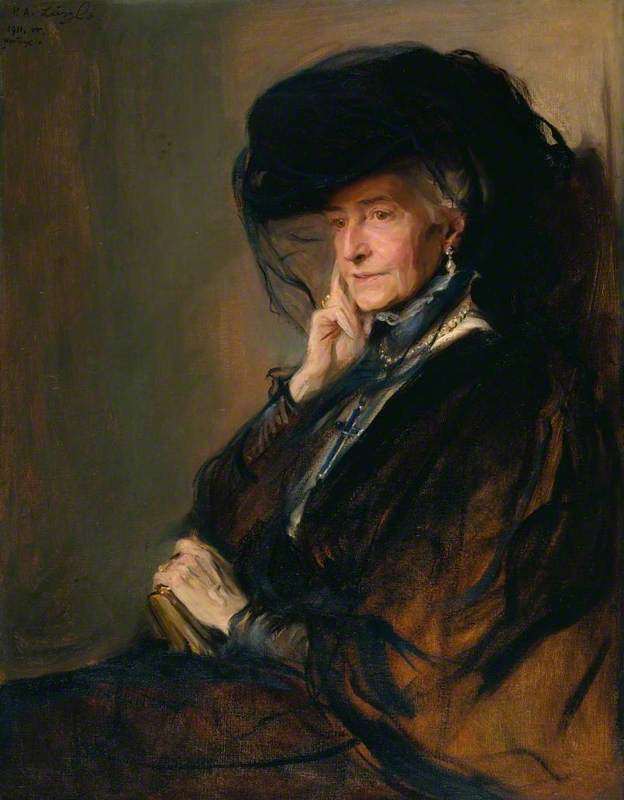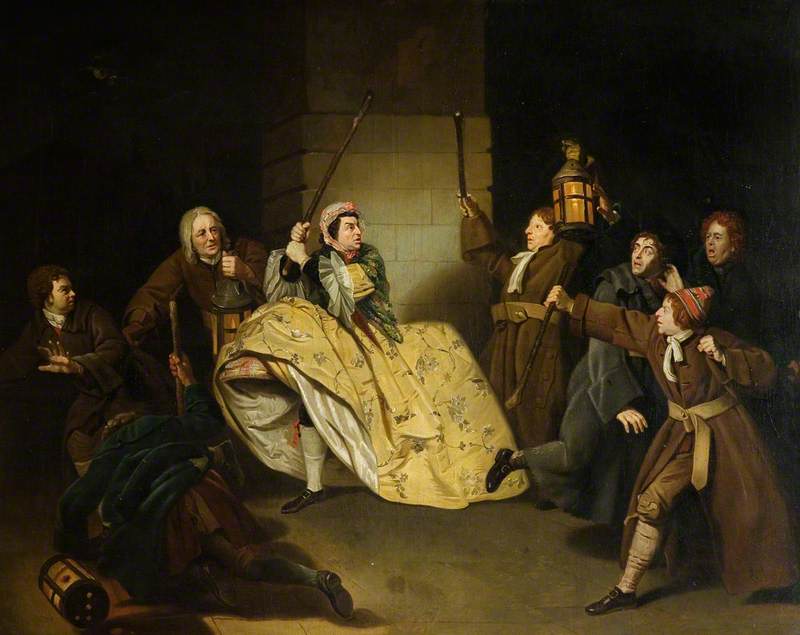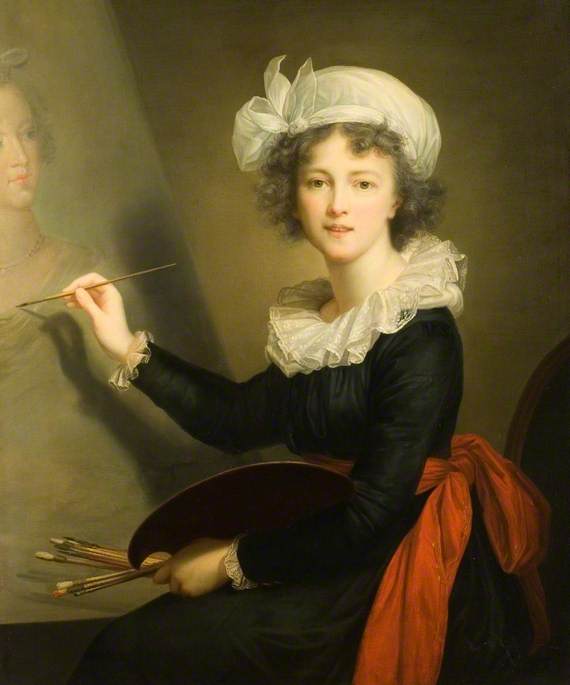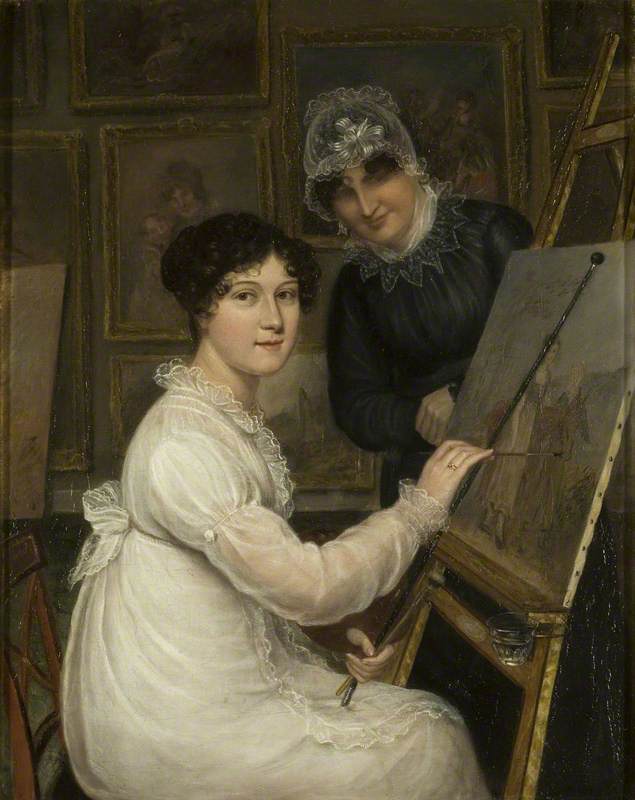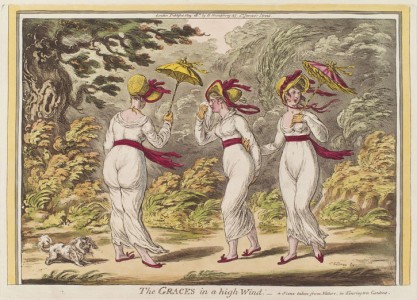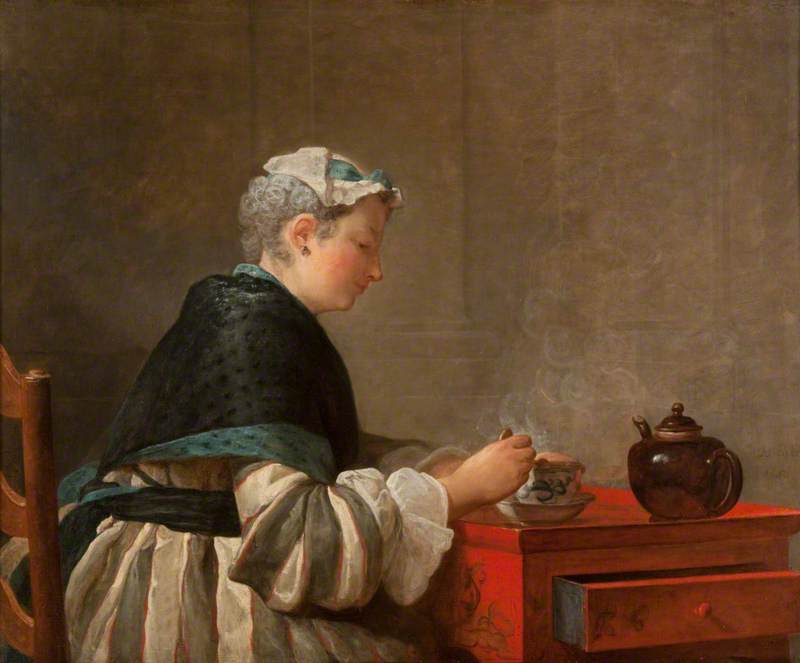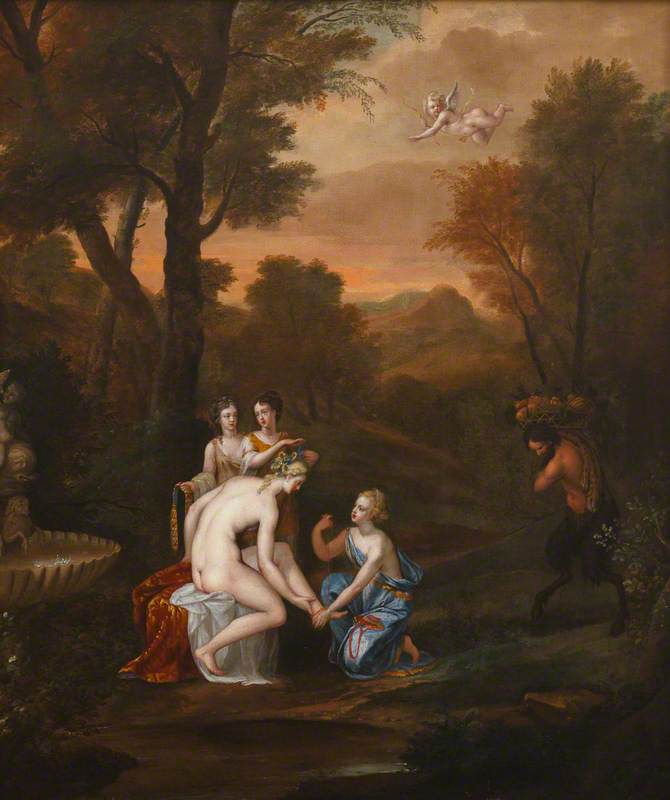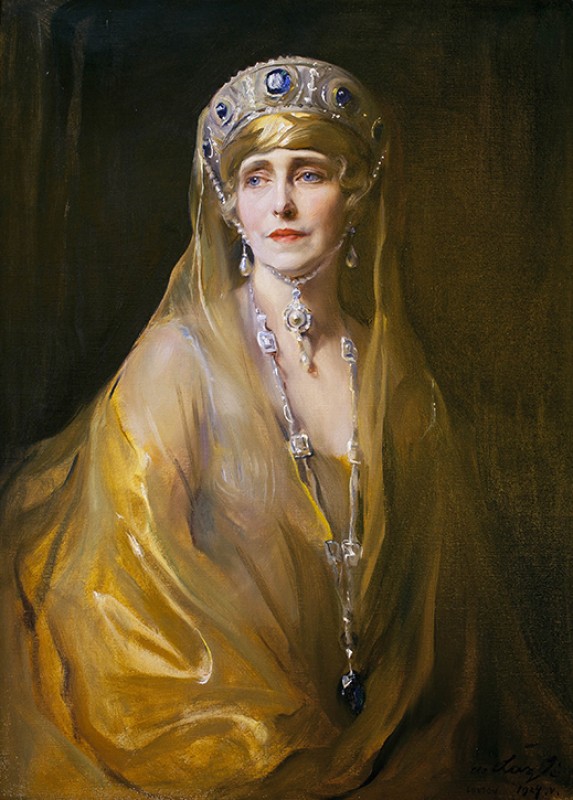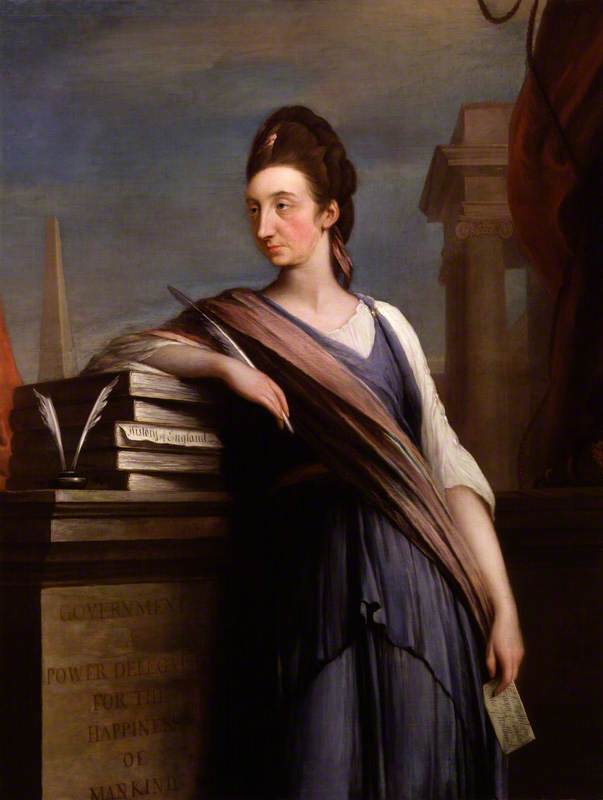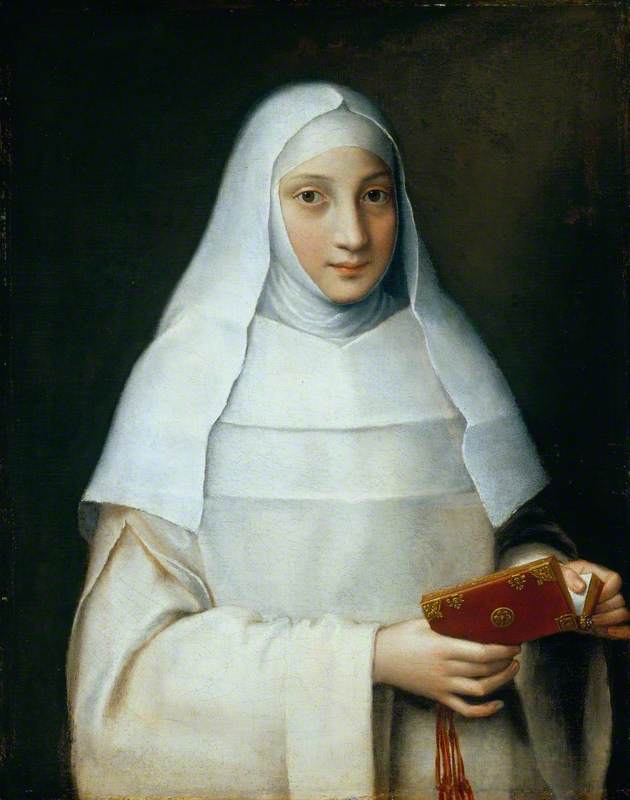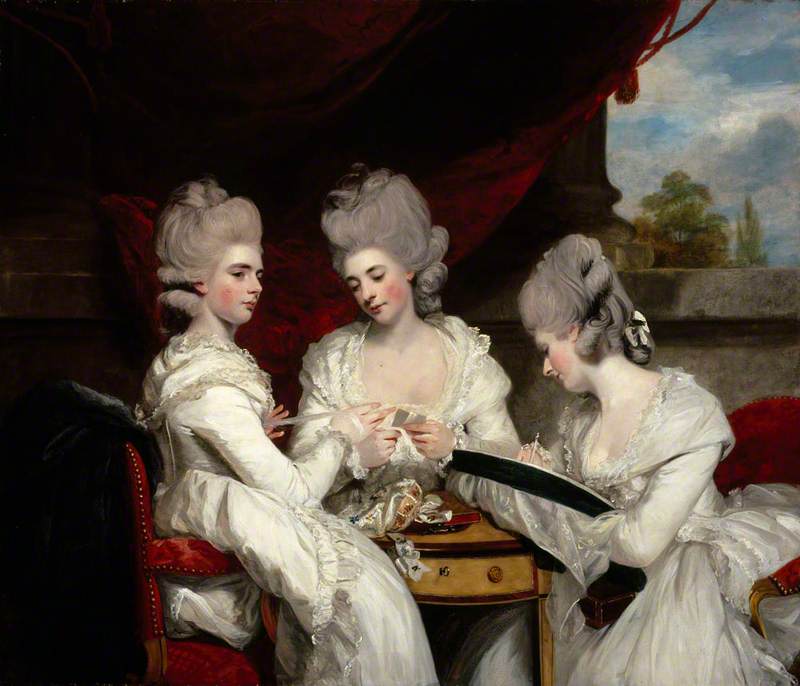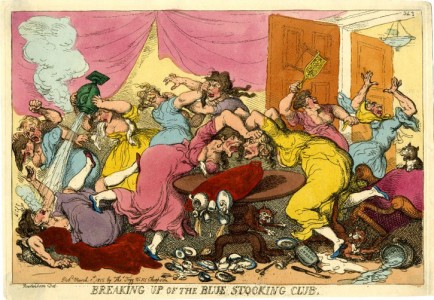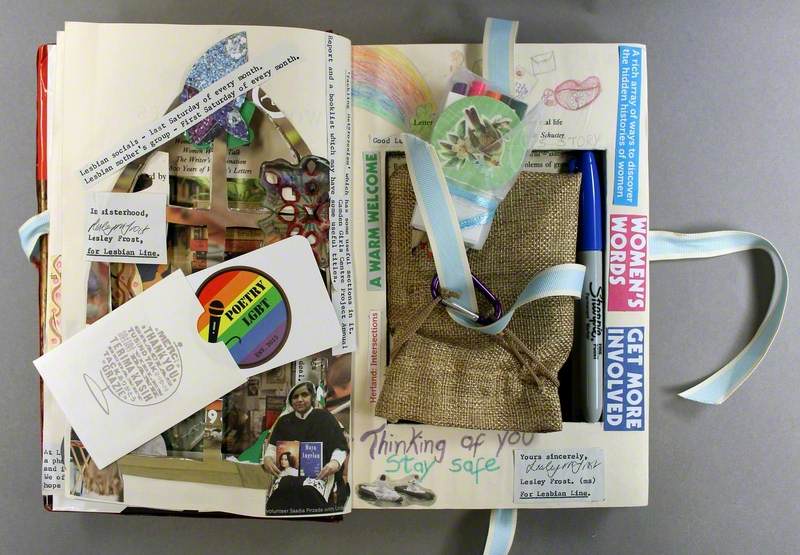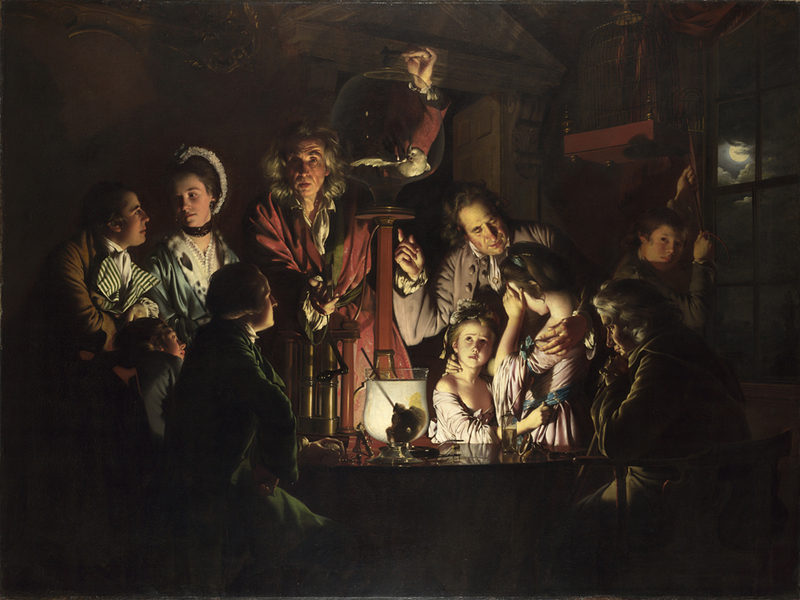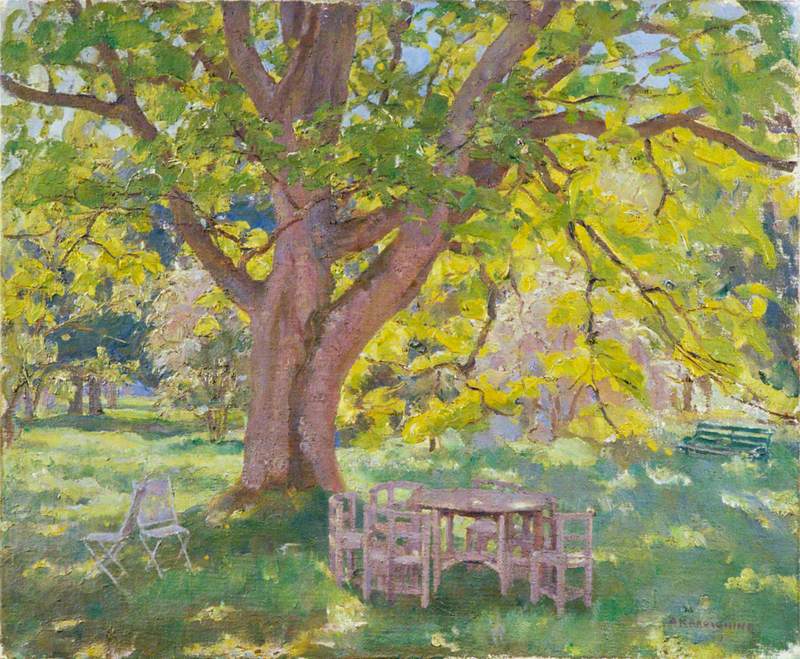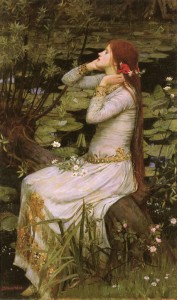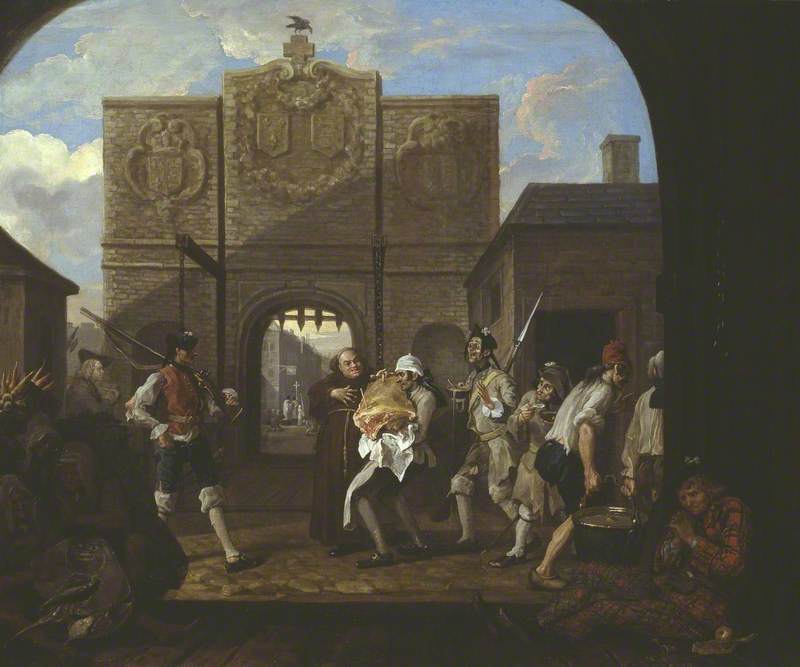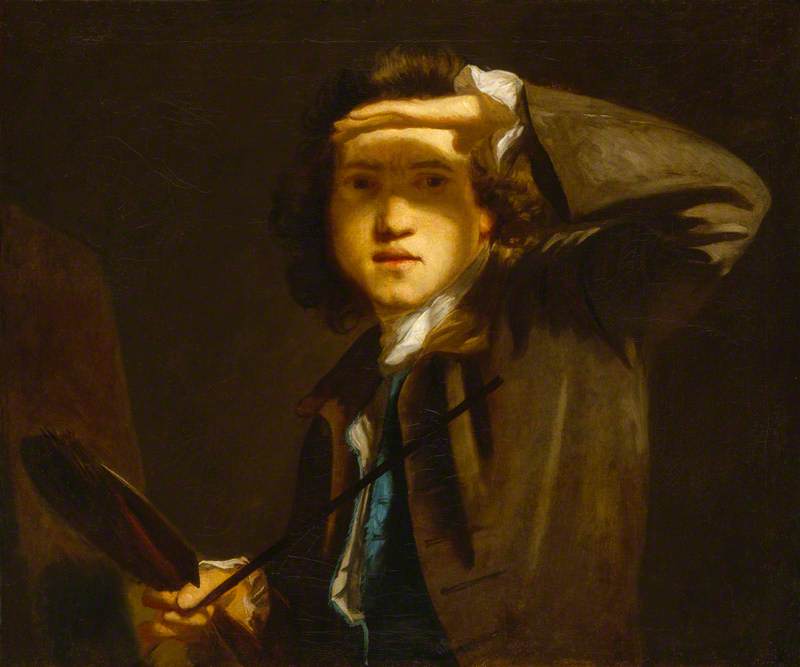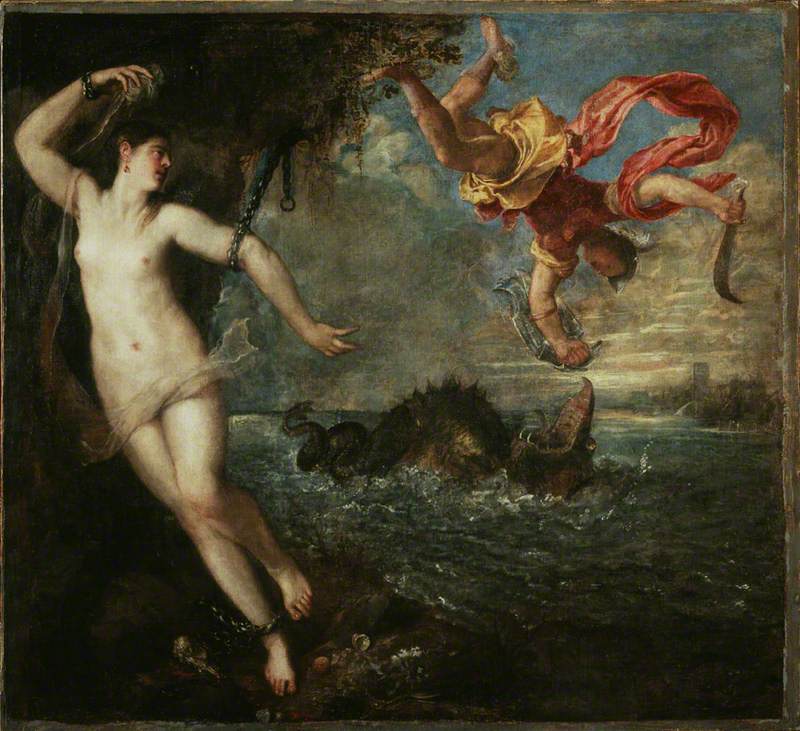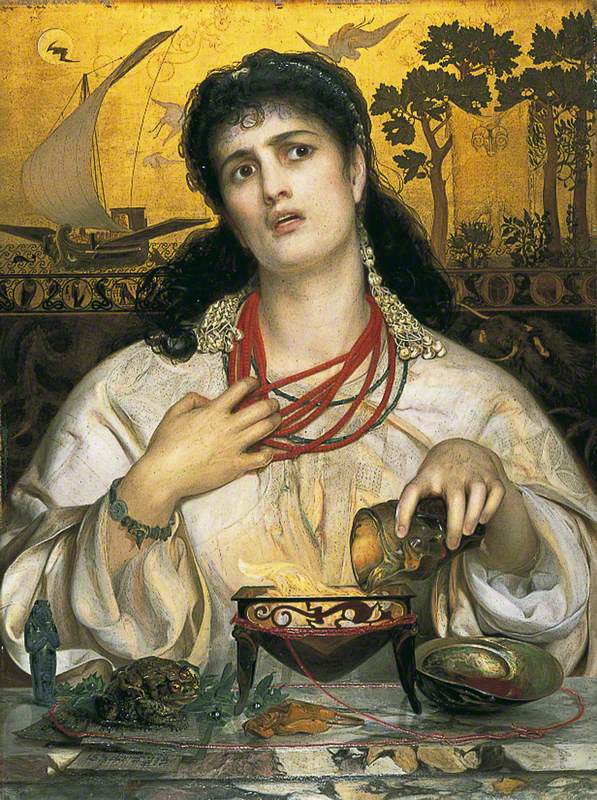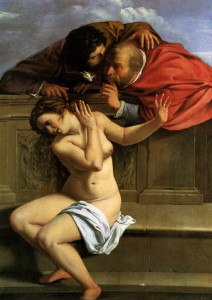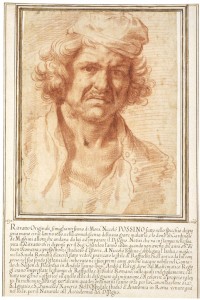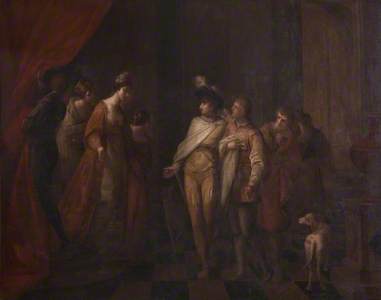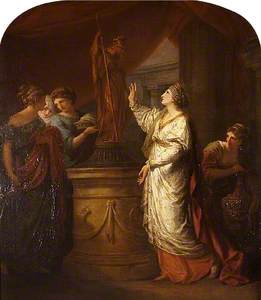Whilst I was cataloguing the paintings of the National Trust collections back in 2012, I was particularly drawn to the art of Angelica Kauffmann, who was one of the most prominent artists in England in the late eighteenth century as well as, an accomplished musician in her leisure time.
Self Portrait of the Artist Hesitating between the Arts of Music and Painting
1794
Angelica Kauffmann (1741–1807) 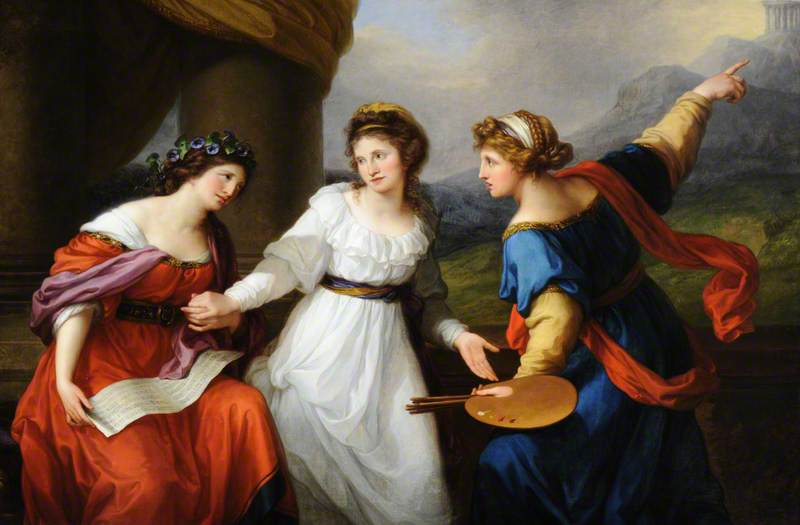
She triumphed in her chosen path, but her struggle to choose is shown in her Self Portrait of the Artist Hesitating between the Arts of Music and Painting, a wonderfully vibrant large painting of 1791/1794.
She was a founding member of the Royal Academy of Arts and the last woman to be admitted until 1922. Born in Switzerland, she was a member of the Accademia di San Luca in Rome at the age of only 23, and came to London in 1766 to seek her fame and fortune. I like her refined neoclassical style of painting that became popular with many of the aristocratic patrons who were building large mansions at the time, many of these buildings are now in the care of the National Trust.
Venus Directing Aeneas and Achates to Carthage
1768
Angelica Kauffmann (1741–1807) 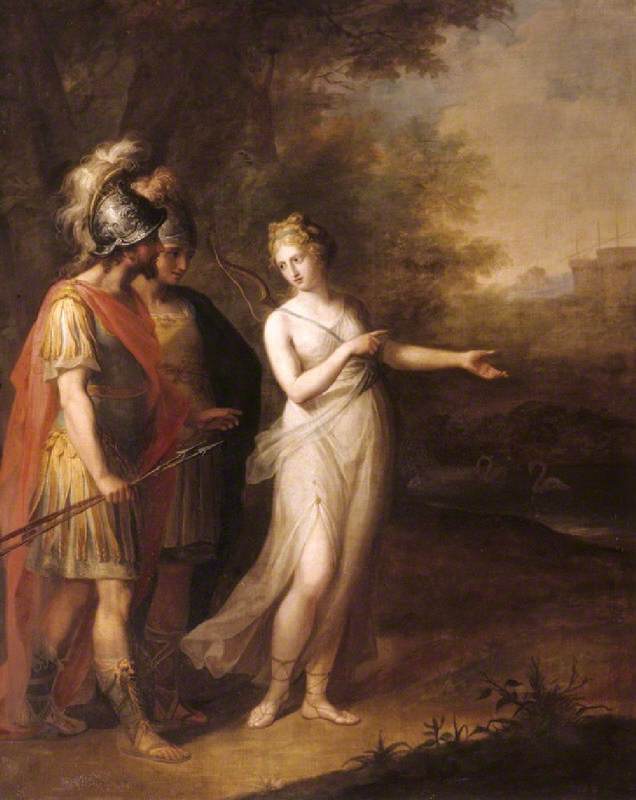
Some of her earliest paintings were history scenes chosen from classical myth such as Hector Taking Leave of Andromache, Venus Directing Aeneas and Achates to Carthage, Penelope Taking Down the Bow of Ulysses and Ulysses Discovering Achilles.
Others imagined the British past, such as Vortigern, King of Britain, Enamoured with Rowena at the Banquet of Hengist, the Saxon General, and Interview of Edgar and Elfrida after Her Marriage to Athelwold, acquired by Theresa and John Parker, later Lord Boringdon.
Vortigern, King of Britain, Enamoured with Rowena at the Banquet of Hengist, the Saxon General
1770
Angelica Kauffmann (1741–1807) 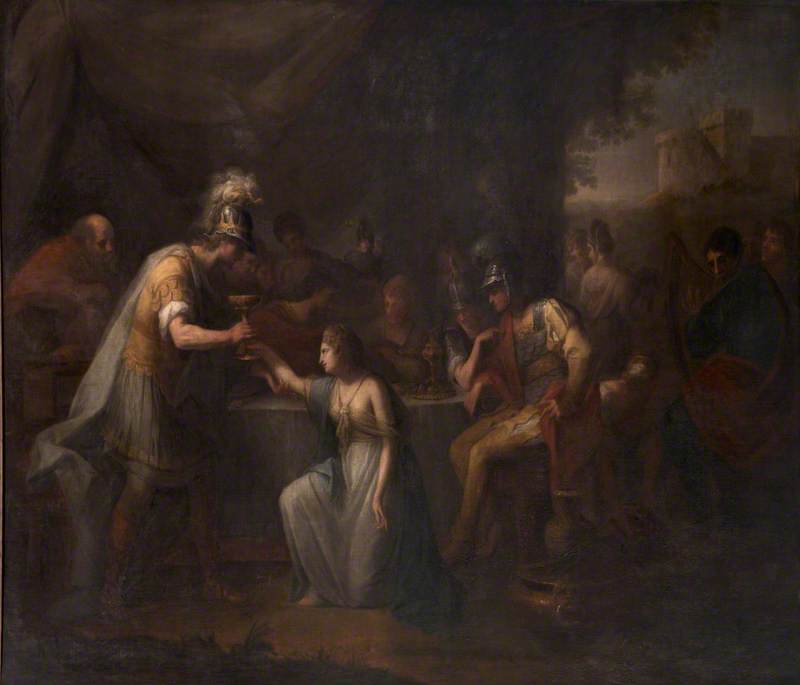
Interview of Edgar and Elfrida, after Her Marriage to Athelwold
c.1770/1771
Angelica Kauffmann (1741–1807) 
Kauffmann’s future second husband Antonio Zucchi decorated Robert Adam’s Saloon and Dining Room at Lord Boringdon’s home at Saltram in Devon.
Kauffmann was friends with Sir Joshua Reynolds, of whom she had painted an intimate portrait in 1767, the Parkers' old family friend and favourite portrait-painter.
She painted on a small-scale, choosing more unusual mythological subject matter, often using contemporary poetical sources of older stories, and employing a feminine touch, referring particularly to loss or longing.
Diomed and Cressida
(from William Shakespeare's 'Troilus and Cressida', Act V, Scene ii) 1789
Angelica Kauffmann (1741–1807) 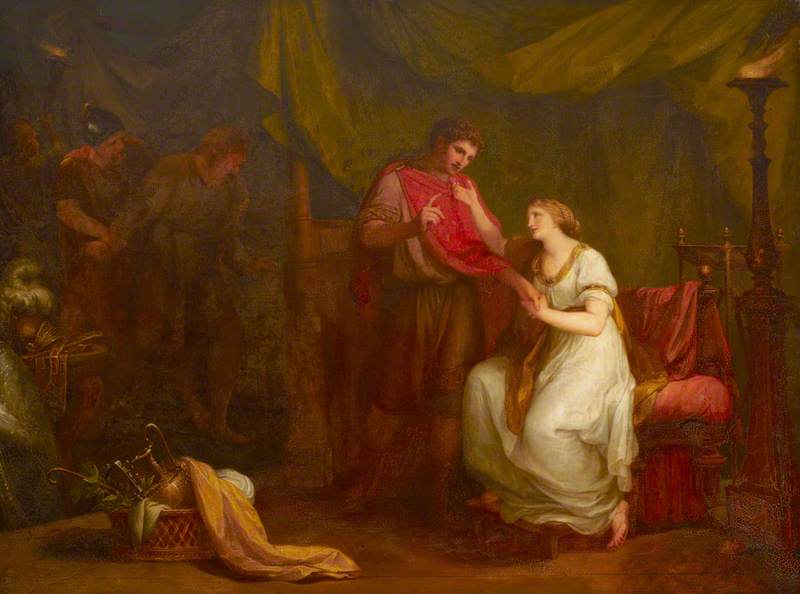
Examples of this include the painting of Diomed and Cressida, in Petworth House, and Penelope Sacrificing to Minerva for the Safe Return of Her Son, Telemachus, at Stourhead in Wiltshire.
Penelope Sacrificing to Minerva for the Safe Return of Her Son, Telemachus
1774
Angelica Kauffmann (1741–1807) 
Her earliest portraits, after settling in Britain, also have a particular informal outlook.
Lady Frances Greville (1744–1825), Lady Harpur
1767
Angelica Kauffmann (1741–1807) 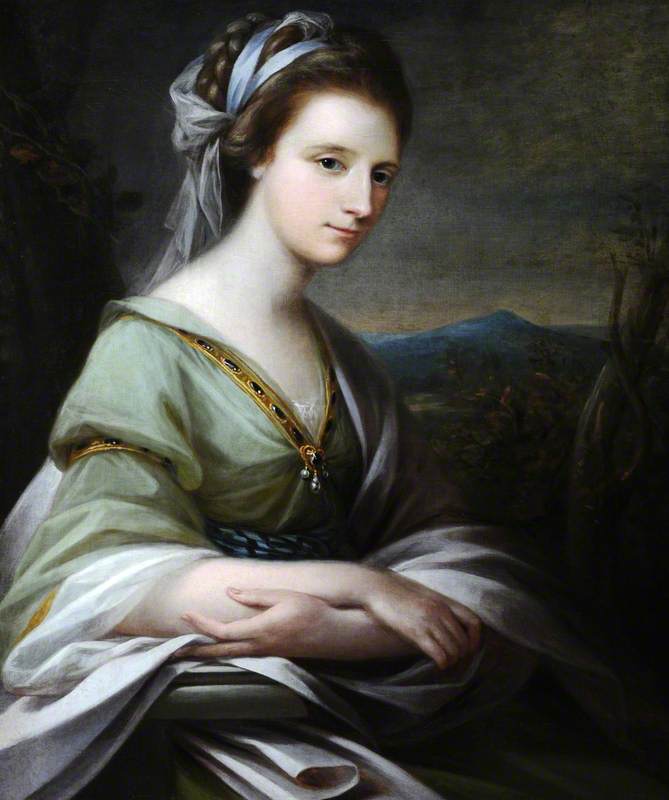
Her Lady Frances Greville (1744–1825), Lady Harpur, depicted as a Muse rather than just the ordinary English gentlewoman.
Frances Ann Acland (1735/1736–1800), Lady Hoare
c.1773
Angelica Kauffmann (1741–1807) 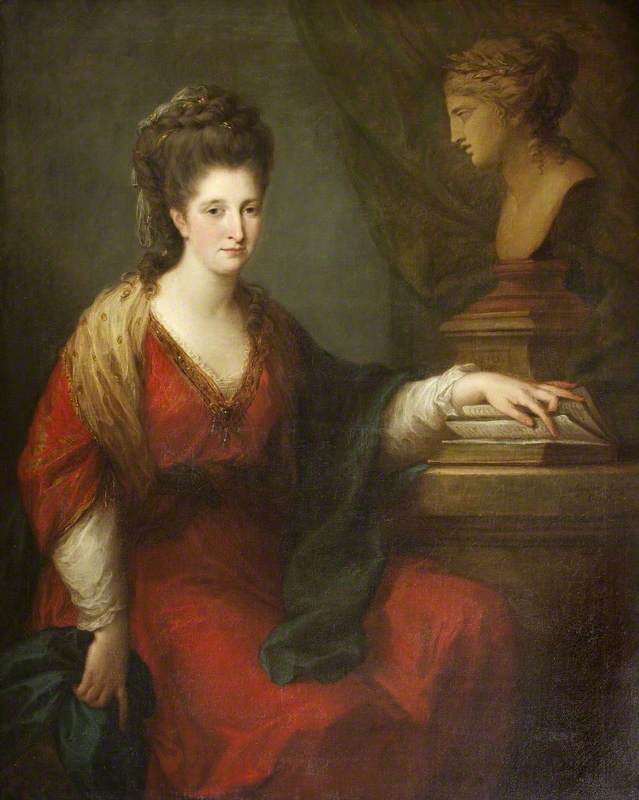
The depiction of Frances Ann Acland (1735/1736–1800), Lady Hoare, at Stourhead – with her hand resting on a book placed on the plinth of a marble head of Clio, the muse of History – contains references to a lady’s intellectual interests.
After returning to Italy in 1781, Kauffmann still had English clients coming to her. Lady Elizabeth Christiana Hervey (1759–1824), Lady Elizabeth Foster, later Duchess of Devonshire in a white muslin chemise dress, not originally intended to be worn out in public, was painted in Naples and finished off in Rome. It shows the mistress of William Cavendish (1748–1811), 5th Duke of Devonshire, whom she finally married three years after the death of his notoriously outspoken first wife, Georgiana Spencer (1757–1806), Duchess of Devonshire. The three had lived in a ménage à trois since 1782 and a pendant portrait miniature of Georgiana set in pearls, on a delicate chain hangs from Elizabeth's neck.
Thomas Noel-Hill (1770–1832), 2nd Baron Berwick of Attingham
1793
Angelica Kauffmann (1741–1807) 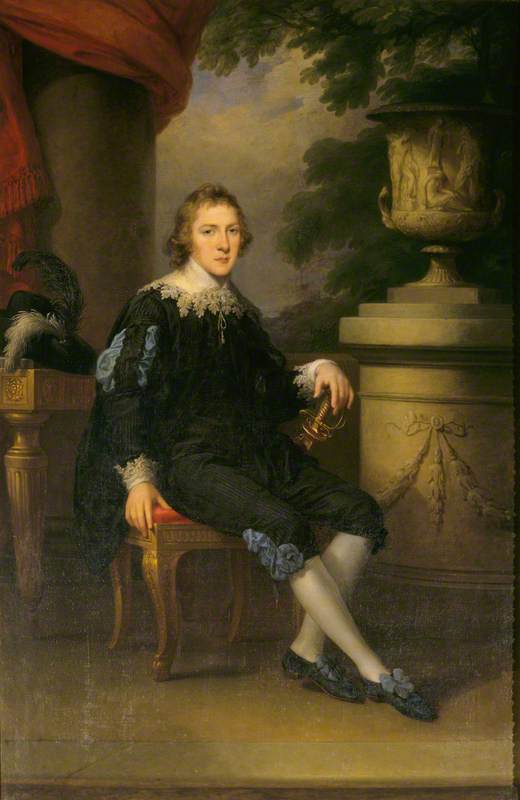
Kauffmann painted an intimate portrait of Thomas Noel-Hill (1770–1832), 2nd Baron Berwick of Attingham whilst he was on his Grand Tour in Rome in 1793. His father had previously commissioned her to decorate The Sultana Room at his home in Shropshire in 1784 with the delicately painted ceiling roundels of mythological scenes, and the wonderfully colourful pair of oil paintings – Euphrosyne Complaining to Venus of the Wound Caused by Cupid’s Dart and Bacchus and Aridane.
Euphrosyne Complaining to Venus of the Wound Caused by Cupid’s Dart
1793
Angelica Kauffmann (1741–1807) 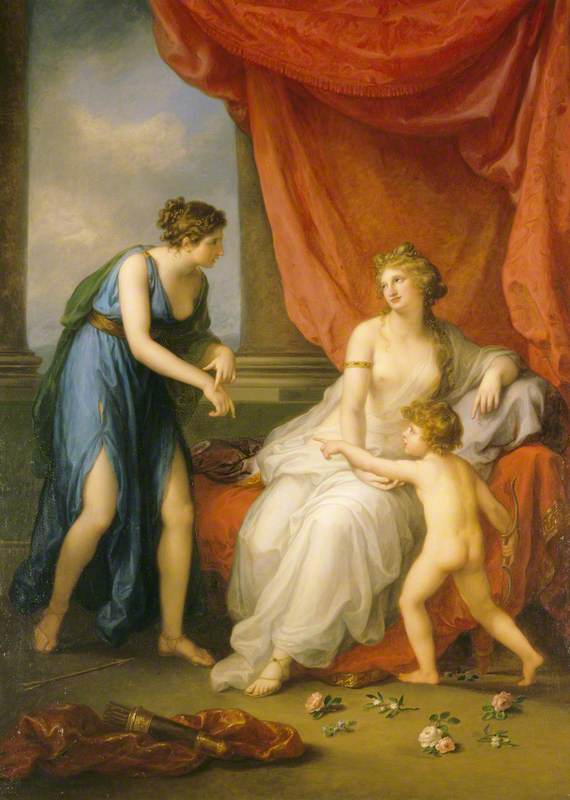
Kauffmann retired to Rome in 1781. She continued to contribute occasionally to the Royal Academy in London, until 1797, but produced little afterwards. She died in the Eternal City in 1807, and was honoured by a magnificent funeral under the direction of the sculptor Antonio Canova, featuring two of her pictures carried in procession.
Other examples of her work in UK public collections can be seen at Wolverhampton Arts and Heritage, The Victoria and Albert Museum, Royal Academy of Arts and National Portrait Gallery, London.
Tania Adams, Former Paintings Project Cataloguer, National Trust
